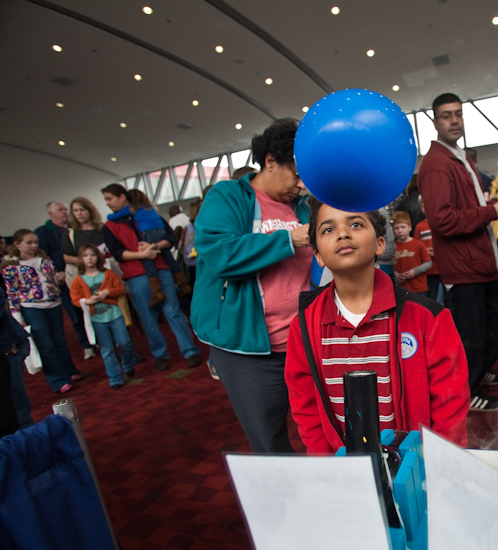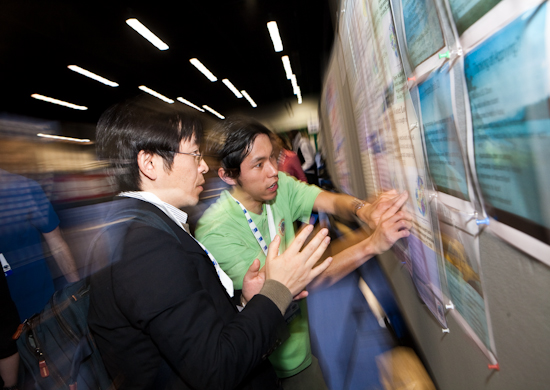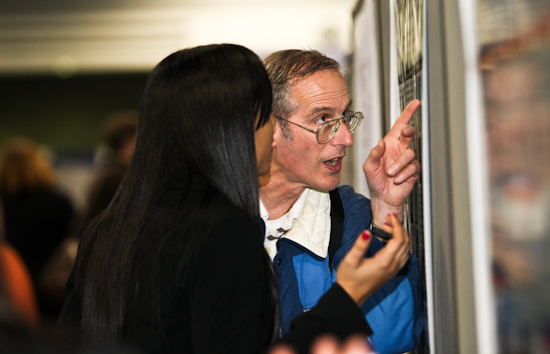The rewards of teaching the Earth sciences at the K-12 level in the United States are great, but sometimes so are the frustrations. At Monday’s education forum, Sandra Henderson touched on some of these issues in a discussion of recent UCAR surveys of K-12 Earth science teachers.
UCAR, which supports the professional development of science teachers through their “Windows to the Universe” website and other initiatives, generated almost 1,000 responses from National Earth Science Teachers Association (NESTA) members and newsletter subscribers. While making note of one particularly positive development–that teachers now have reasonably good access to technology and utilize it regularly–Henderson also listed the top 10 concerns of science teachers and summarized the surveys’ findings.
So how can these concerns be addressed? American educators might look to their colleagues across the Pacific for a uniquely successful approach to environmental education. In another forum presentation, Michihiko Tonouchi of the Japan Meteorological Business Support Center in Tokyo described a program in Japanese public schools that teaches students about global warming and other environmental issues.
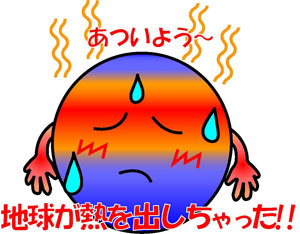
Weather studies in Japan are now a compulsory subject for elementary school fifth-graders and those in their second year of junior-high school. In the program described by Tonouchi, approximately 100 broadcast meteorologists from the Weather Caster Network (WCN) and 300 engineers from Sharp share teaching responsibilities, with the broadcasters explaining basic scientific principles of global warming and the engineers discussing mitigation and adaptation strategies. Quizzes and hands-on experiments are an important part of the instruction. Along with global warming, alternative energy and recycling are also studied.
A website maintained in conjunction with the program provides a forum for student and teacher feedback, as well as activities, articles, and other resources. Tonouchi noted that both students and teachers have enthusiastically embraced the program, and said that the program’s organizers would like to expand the project to the U.S. and other parts of Asia.
On Wayward E-mails and Public Perceptions
The session yesterday summarizing findings from the recent report, Global Climate Change Impacts in the United States, put some heat on authors when attendees asked about the impact of the leaked e-mails from the University of East Anglia.
The discussion aired concerns about what scientists can do to overcome public suspicions generated by the e-mail controversy. To the question, “What concrete steps can we take to get credibility back for our field?”, Tom Karl, Director of the National Climatic Data Center, replied:
I think that’s a very good question, and I don’t think there’s one magic silver bullet. I think the key to our success in this Society and science in general has been the peer review process, and making sure the peer review process is fully understandable not only by our colleagues and peers but the outside world who uses the work that we do. That’s number one.
Secondly, when we actually publish papers, the data upon which the paper is based and the algorithms that are used–we do not have a consistent policy in the world in terms of access to that data. That’s something in our AMS Council meeting we discussed yesterday as to just what our policy should be in making sure it’s explicit. It isn’t quite so clear.
So I think there are some steps that we can take forward. And of course, in addition, the more transparent we can be in making sure that when we do have a paper, we can point to where the data can be found and be accessed–I think those are all important steps, but I’m sure there are others. Again, I don’t think any individual one is going to work. We have to have a multiple front here, and it’s important because it affects all of our work, across the board.
A Pair of Pairs
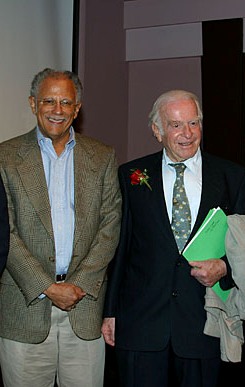
If you think you’re seeing double at this year’s Annual Meeting it’s not necessarily because of your grueling schedule here in Atlanta. For instance, that’s not one, but two NCAR scientists being honored with named Symposia this week. Today offers sessions honoring Joachim Kuettner; Thursday is reserved for Warren Washington.
Meanwhile, there were indeed two Businger’s at Sunday’s Fellows Reception. Father Joost was celebrated as one of the three new Honorary Members of the AMS, while son Steve was named a Fellow. We believe this is the first time one family has been so honored at the same Annual Meeting.

Fellows Honored at Review
At the Welcome Reception following the 90th Annual Review and Fellows Awards Sunday night, newly elected Fellows socialized with attendees at the Student Conference and Local Chapter Poster sessions, which were held in conjunction.



Public vs. Private: For Students, the Choice Is Theirs
Saturday’s Student Conference forum on “The Job Market” offered advice on what job hunters can expect in their career pursuits, and a clear theme of the discussion was the difference between employment in the private and public sectors. Trisha Palmer of the NWS Forecast Office in Peachtree City, Georgia, delineated many of the pros and cons of public sector work, noting the security, geographical flexibility, and benefits as some of the most positive aspects. Robert Baron, founder of Baron Services in Huntsville, Alabama, talked about some of the qualities that can lead to success in the private sector.
Additionally, Ryan Boyles of North Carolina State University noted that a new peril of job-hunting in the high-tech world is the plethora of personal information floating around the internet. Boyles recommended that students be very careful about putting personal pictures and other information online that could later be used against them in their job search.
Ultimately, all the speakers could agree that perhaps the most important advice they could give to the students is “do your best.”
Counting the Cards in Nature's Casino

With “New Demands on Science and Services” being the theme of this AMS Annual Meeting in Atlanta, it is safe to say that no demand on climate science is more novel and complex than the national security angle of climate change. Strife in Africa is one area, as we mentioned here, but other flash points include the security of borders once covered by glaciers, water scarcity in numerous regions, and the newly navigable Arctic waterways.
It’s no wonder the Oceanographer of the Navy has gotten involved in this new area. Rear Admiral Dave Titley, oceanographer of the Navy, who has been charged with the U.S. Navy Task Force Climate Change, will be one of several national security experts featured in the two-part Tuesday Joint Session panel discussions (11 a.m. and 1:30 p.m.) on “Environmental Security: National Security Implications of Global Climate Change.”
In an interview on climate change with Armed Services radio, Admiral Titley showed a strikingly forward, mission-oriented viewpoint on the Navy’s interest in climate change, and not just the practical attitude of an officer with a research background.
“We’re operating in Nature’s casino,” he said, “and I intend to count the cards.”
Data Stewardship: A Basis for Change
Today’s Town Hall on Data Stewardship promises to be a good opportunity to consider how the atmospheric science community might reshape itself at the most fundamental level: the data underlying science and services.
According to Unidata’s Mohan Ramamurthy, chair of the AMS Ad Hoc
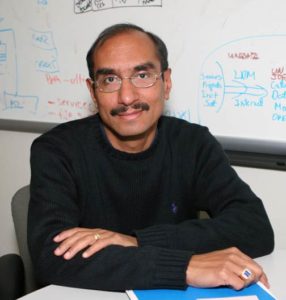
committee presenting its prospectus at the session (12:15 p.m.-1:15 p.m.; B211), data stewardship is not just a topic for people who specialize in archiving. Technology has made this a task for all of us. In the following email exchange, Ramamurthy made a good case to The Front Page for how data stewardship is basic to how the entire community interacts and progresses.
Why did AMS form an Ad Hoc Committee on Data Stewardship?
The AMS STAC Commissioner Roger Wakimoto was fielding a number of questions related to data, so in the fall of 2008 he began highlighting the importance of Data Stewardship. According to Roger’s report to the AMS Council in 2009
Our community is generating huge volumes of data from observing systems (especially remote sensors) and enormous outputs via numerical simulations. In addition, topics such as data archival, access (including free access between countries), maintenance, metadata, visualization, life expectancy are becoming critical at many institutions. In light of this background information, it was my suggestion that the AMS needed to propose a formal mechanism to recognize this important area that permeates our entire discipline.
How have stewardship needs changed in recent years?
Data has always been essential to the field. However, advances in computing, information and observational technologies have resulted in larger and larger volumes of diverse data being generated from many sources and they are being used/consumed by more and more people. What used to be the purview of just data centers and providers, has now become a responsibility for many more stakeholders. Also, there is increasing awareness of the importance of data and data stewardship. For example, the term “metadata” was not part of the scientific vernacular until recently, but now many more people understand it and recognize its importance. Similarly, until now there was no expectation that people would share datasets from their scientific studies or link them to publications with others. The best people did was give a URL where a reader of a scientific article could get a few additional plots or products. Today it is (theoretically) possible to link all of the data that went into a study (e.g., model output, model configuration, source code, derived analyses, etc.) in appropriate places in a paper. How to go about it? Who should be responsible for keeping those links and data sets alive in perpetuity?
How does AMS figure in this expansion of the possibilities, and responsibilities, of data stewardship?
We should understand that the AMS is not usually the producer of data sets. So the Society will have to work with data producers and data hosting/holding facilities. And how would AMS get authors to submit not just a manuscript but all of the data? And to where? Each area will have, among others, technical challenges, coordination and collaboration
challenges, and organizational challenges.
Also, data stewardship is a vast area, so we will have to scope it properly (i.e. limit it), or else nothing will get done. Picking those key areas will be a challenge when the membership is diverse and you have a large number of stakeholders.
What might attendees learn from the Town Hall in Atlanta?
The purpose of the Town Hall is two fold. a) To inform attendees about what the Ad Hoc committee is thinking and our proposed plans/activities. b) To gather feedback on our thoughts/plans/prospectus as well as get additional input on what AMS members would like to see happen in this area.
Who will most benefit from attending?
Almost anyone who is interested in data stewardship issues (scientists, data providers, editors and publication commission folks, librarians, educators, IT personnel) will benefit or can attend and contribute their thoughts. But realistically, I expect a smaller subset of those people who are most interested in this subject to come to the Town Hall.
Will feedback from attendees influence the committee’s task?
This is a brand new area for AMS. As such, everything is a work in progress. We want our mission and tasks to be shaped by the membership.
Nothing but the Truth, Part 2
We noted that Richard Clark challenged his audience at the AMS Student Conference to make the pursuit of truth their purpose in scientific careers. Not surprisingly, others at the conference expanded on that theme. Jon Nese of Penn State gave a talk spanning some of the pros and cons of life in the various sectors of the weather enterprise, but perhaps most striking was his observation of the role that trust plays in scientific endeavors, academic, private, research, operational or otherwise. It’s worth hearing the way Jon expressed the interdependence between the sectors–operational, research, entrepreneurial, and otherwise–in this pursuit of truth as we embark on a meeting week full of discussions of uncertainties, promising findings, and future priorities.
Weather Fun Draws a Crowd
About 5,000 people came in out of the rain to enjoy the weather fun inside at the 9th WeatherFest this afternoon.


